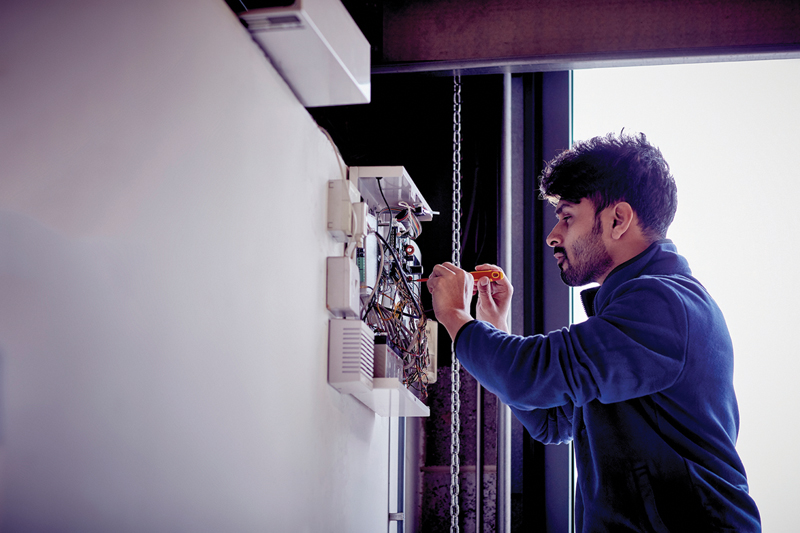 Nick Whiting, Head of BT Redcare, looks at the move from PSTN to an all-IP service
Nick Whiting, Head of BT Redcare, looks at the move from PSTN to an all-IP service
Demand for security services is on the rise. Mounting concerns around crime and safety, coupled with a desire to reduce insurance premiums, has resulted in the UK security industry growing on average 6.4% each year between 2016 and 2021. However, the landscape is about to change with an impending technical transition set to have a significant impact – the switch-off of the country’s Public Switched Telephone Network (PSTN).
By 2025, communication providers will move their customers to a new digital phone service, away from the PSTN which has formed the backbone of Britain’s communications network for over a century. The tech that powers the PSTN hasn’t really changed since the first public automatic telephone exchange opened in 1912, so it’s time to move to a network that’s fit for the future and to one that can cope with today’s digital demands.
The issue is that many legacy dial up devices – including alarm signalling solutions used to notify Alarm Receiving Centres (ARCs) in the event of an alarm being triggered – still rely on the Wholesale Line Rental (WLR) suite (e.g. traditional phone lines), which are supported by the PSTN. When customers are moved over to the new digital service these legacy devices will no longer work.
Therefore, future proofing the UK’s security requires a move, to all-IP solutions: devices that communicate via always-on IP or mobile connectivity – or a combination of both – to ensure end-users’ premises remain protected at all times.
Protecting lives and livelihoods
The UK’s fire and rescue services attended around 156,000 fires in the year to June 2020, while there were 356,000 reported burglaries in the year to March 2020. When you consider the risk to lives and livelihoods that incidents such as these represent, the need to futureproof alarm signalling solutions is clear.
Installers are key to the necessary transition process. Indeed, their work is fundamental, whether a one-person operation or part of a global brand, installers are responsible for ensuring end-users, both business and domestic, are supplied with reliable fire and intruder alarm signalling systems.
While end-customers may require some education around the need to transition, the necessary infrastructure is likely already in place. Indeed, many premises have access to broadband or mobile connectivity, and the rise of connected devices means the idea of an IP-connected solution is far from being an alien concept – installing these devices shouldn’t be an issue for end-customers when advised of the benefits above their existing solution.
But most of the heavy lifting will be carried out by installers, and this can mean a need for new training, equipment, suppliers, and ways of working. Given the potential burden the upcoming change represents, some installers may opt to continue supplying and fitting legacy devices – and there is still demand.
But, while 2025 marks the final switch-off, when fibre coverage around an exchange reaches 75%, Openreach will issue a stop sell notice for copper-based services, which means you are no longer able to buy traditional phone services in that exchange area. Communication providers will directly contact their customers to let them know of their upgrade to the new digital phone service, thus potentially leaving installers out of that loop. Without a move to all-IP, it’s not simply end-users that will be put at risk, installers too will need to ensure that they are ready to support customers looking to transition.
Robust and responsive
Installers needn’t face the transition to all-IP alone. Fully aware of the impact the switch-off may have, device vendors will work with installers to provide the support they need, such as providing comprehensive packages of resources and training materials. The hope is that, with assistance during the installation process and ongoing round-the-clock support, installers can be confident that their customers’ homes and businesses – as well as their own reputations – are safe and secure.
While switching off the PSTN may be seen by many as the end of an era, the move to all-IP is a much-needed move in an increasingly digital world. For one thing, these new alarm signalling devices feature a combination of wired and wireless broadband and 4G connectivity, making them significantly smarter, faster and more reliable than the legacy solutions they’ll replace.
But as legacy devices cease operating from 2025 – if not before – it’s vital that alarm signalling systems are futureproofed now. It’s true that the burden for carrying this out does lie largely with installers but, with the right support, the process should be relatively straightforward and – importantly – secure.
The continuing growth of the security services industry – and the safety of the people and businesses it serves – depends on its ability to adapt to a digital, all-IP future; one in which there should be no compromise on security.
For more information click here



